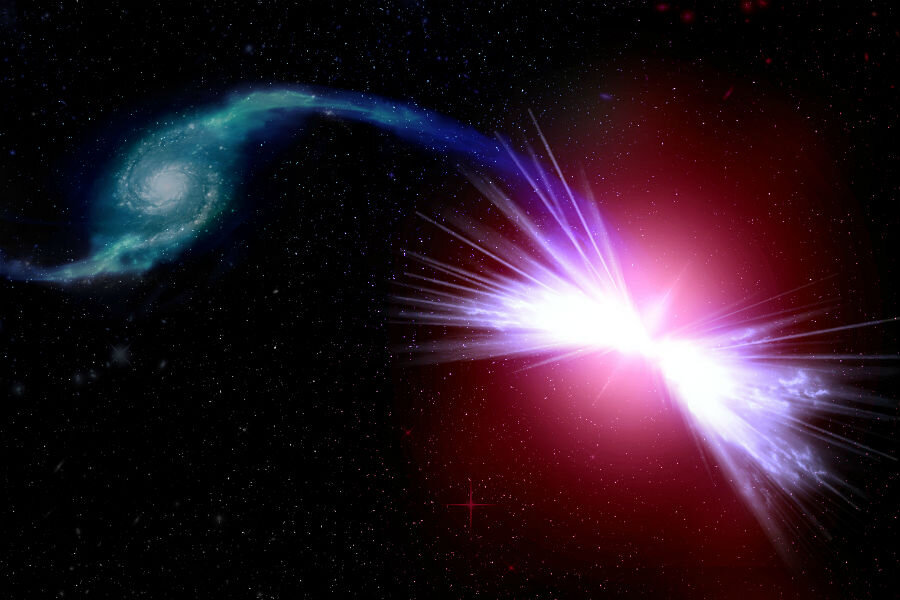Do supermassive black holes squelch star formation?
Loading...
Scientists say they have discovered the cause behind the continued dimming of quiescent galaxies around the universe: supermassive black holes (SMBHs) that keep new stars from developing.
A new study by an international research team, headed by the University of Tokyo’s Kavli Institute for the Physics and Mathematics of the Universe astronomy researcher Edmond Cheung, looks into why some galaxies are inactive despite their apparent ability to form stars.
“Stars are created by the cooling and collapse of gas, but in these galaxies there are no new stars despite an abundance of gas,” Mr. Cheung said in a Kavli Institute release. “It’s like we have rain clouds hanging over a desert, but none of the rainwater is reaching the ground.”
By studying the interplay of radiation and matter in the apparently dormant galaxies, the team found that gas output from supermassive black holes can prevent stellar formation from progressing. Supermassive black holes are common in most galaxies throughout the universe; the Milky Way is believed to be centered by a SMBH contained within Sagittarius A*.
Red geyser galaxies, known as “red and dead” for their lack of younger phase blue stars, had previously baffled scientists, because they contained the necessary ingredients for the evolution of stars yet remained quiet. Scientists had linked the the stellar standstill in those systems to the presence of the giant gravitational regions, and the research team noticed gas patterns in the red geyser galaxy Akira stemming from strong, heated winds coming from the SMBH at its center that effectively kill the gaseous formation of stars there.
“[W]hen we modelled the motion of the gas in the red geysers, we found that the gas was being pushed away from the galaxy centre, and escaping the galaxy gravitational pull,” Oxford University physicist Michele Cappellari said in a release. Without the presence of cooler gases throughout a quiescent galaxy, stellar formation cannot be initiated.
“[T]he energy input from the galaxy’s low-level active supermassive black hole is capable of driving the observed wind, which contains sufficient mechanical energy to heat ambient, cooler gas (also detected) and thereby suppress star formation,” the researchers wrote in their Nature-published report.
The observation was made with data taken from the fourth Sloan Digital Sky Survey, Mapping Nearby Galaxies at Apache Point Observatory (MaNGA), started in 2014, which can record galactic activity 10 to 100 times faster than previous such surveys, per Kavli. The Sloan survey output a large enough sample size to give the scientific team more information than ever on changes in galaxies.
“The critical power of MaNGA is the ability to observe thousands of galaxies in three dimensions, by mapping not only how they appear on the sky, but also how their stars and gas move inside them,” Kevin Bundy, a principal investigator on the Sloan survey and Kavli Institute assistant professor, said in the Kavli release.
The researchers only used the Akira galaxy and its SMBH, likely formed through its contact with the nearby Tetsuo galaxy, as an example for their study. But the team concluded that the black hole effect is common throughout the universe, and that the galactic wind theory could apply to most, if not all, quiescent galaxies.






